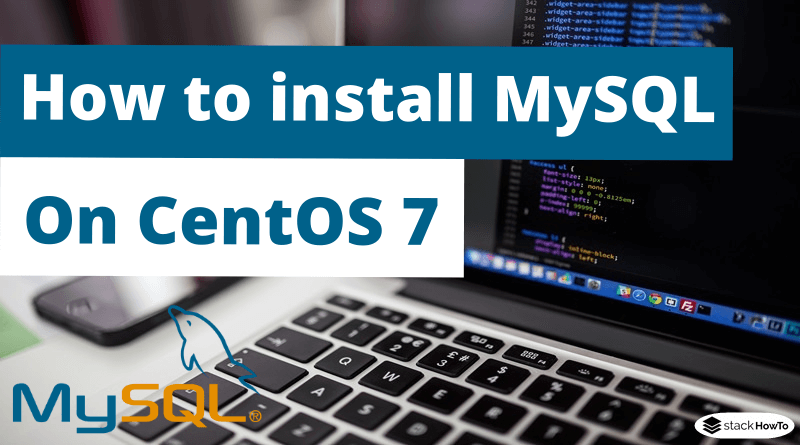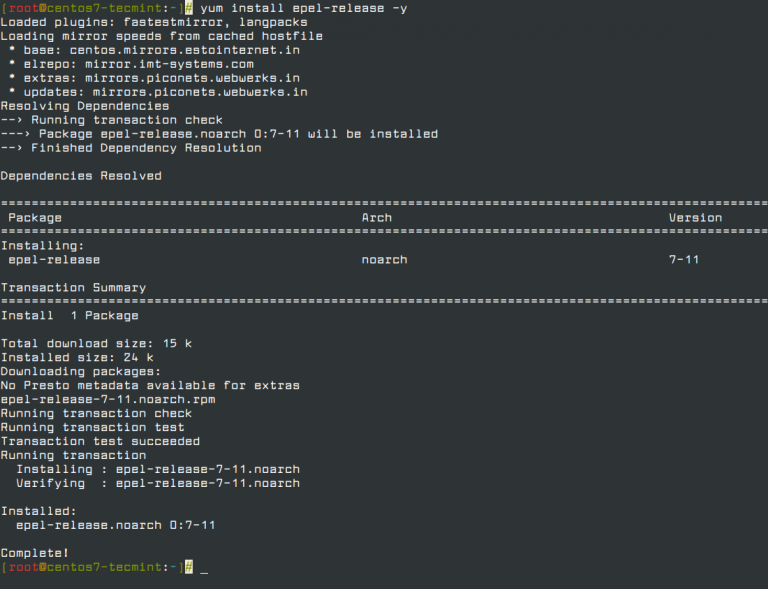

#CENTOS 7 INSTALL MYSQL 5.7 PASSWORD#
Password with asterisk for root user (red area below):Ĥ sql_mode=STRICT_TRANS_TABLES,NO_ZERO_IN_DATE,NO_ZERO_DATE,ERROR_FOR_DIVISION_BY_ZERO,NO_AUTO_CREATE_USER,NO_ENGINE_SUBSTITUTIONīecause two different installation modes were recorded, the configuration was also recorded twice, except that friends who want to see different installation modes do not need to go back and flip the configuration, until the CentOS 7 installation configuration MySQL 5.7 record is complete.This article will walk through you the process of installing and updating latest MySQL 5.7.9 version on RHEL/CentOS 7/6/5 and Fedora 23/22/21 using MySQL Yum repository via YUM utility. The default remote access to the database is not open, configure it with the following commands:ġ > GRANT ALL PRIVILEGES ON *.* TO IDENTIFIED BY '******' WITH GRANT OPTION MySQL 5.7 database installation completed.

Start the MySQL service using the following command and see how the service is running: Since MariaDB is installed by default on CentOS 7, use the following command to view and uninstall mariadb:Ģ # rpm -e -nodeps mariadb-libs-5.5.86_64 Upload the compressed package to the mysql57 directory on the server using Xftp:
#CENTOS 7 INSTALL MYSQL 5.7 DOWNLOAD#
Change the server below to install the compressed package.įirst go to the official website: Download related installation packages:Ĭreate mysql57 under the / usr directory on the server remotely: If the server cannot be connected to the network and cannot be installed using the yum source, you can use a computer that can be connected to the network to download the compressed package from the official network for installation. Log in to the database with the modified password and execute the following command to view the character set settings:Įxecute the following command to set the database service up to start:Ĭompressed package installation MySQL 5.7 When the configuration is complete, restart the database service by executing the following command:

This is set to utf8mb4: first, because utf8 encoding only supports 3 bytes of data, while emoticon data on the mobile side is 4 bytes of characters, inserting emoticon data directly into utf-8 encoding database will cause an exception second, I have read an article from a God that utf8 in MySQL is not really utf8, so utf8mb4 is used. The complete configuration file is as follows:ĩ sql_mode=STRICT_TRANS_TABLES,NO_ZERO_IN_DATE,NO_ZERO_DATE,ERROR_FOR_DIVISION_BY_ZERO,NO_AUTO_CREATE_USER,NO_ENGINE_SUBSTITUTION Set the database character set to utf8mb4 and set sql_mode l to support group by statements. Then enter quit, return to exit the database login, and use the command to open the database configuration file: Use the following command to modify the root user password:ġ > SET PASSWORD = default remote access to the database is not open, configure it with the following commands:ġ > GRANT ALL PRIVILEGES ON *.* TO IDENTIFIED BY WITH GRANT OPTION Password Enter the password you just found to log in to the database: Log in to the MySQL database using the following command: This version of the database generates a random root user's password in the / var/log/mysqld.log file at installation time, and looks at the file to get the password:ġ # grep 'temporary password' /var/log/mysqld.log Wait a moment for the download and installation to complete:Įxecute the following command to start the database and view its status: Now you can install MySQL, execute the following commands:ġ # yum install -y mysql-community-server Then execute the source file installation command:ġ # rpm -ivh Therefore, you need to manually execute the following commands to download the installation files of the source files:Ģ # wget 'https: ///get/' Executing the installation command directly from the yum source will prompt "No package mysql-community-server is available.": The default source file for the system in CentOS 7 is MySQL-free. The previous section recorded the installation and configuration of MySQL 5.7 (Previous connection: ) Now in CentOS due to the need to install and deploy large data environments MySQL 5.7 is installed on system 7 and the CentOS 7 environment installation configuration has been recorded (previous connection: ), so configure the installation directly here.


 0 kommentar(er)
0 kommentar(er)
